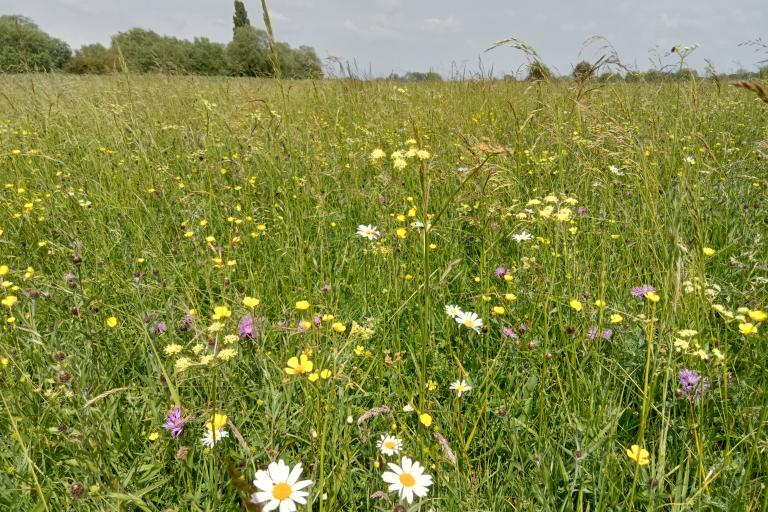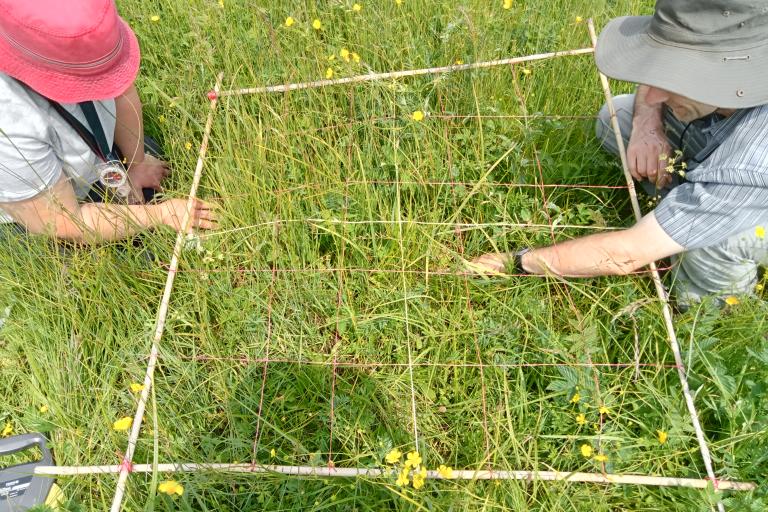Chimney Meadows, is one of BBOWT’s largest nature reserves which forms part of an ancient landscape that is home to nationally important wildflower meadows and provides a vital refuge for wading birds and wildfowl. TVERC (Thames Valley Environmental Records Centre) joined forces with BBOWT to conduct botanical surveys aimed at assessing the effectiveness of reversion from arable fields to species-rich lowland meadows.
The restoration project
Back in 2004, BBOWT embarked on an ambitious project: the creation of 70 hectares of floodplain meadow on ex-arable land. This endeavour was one of the largest arable reversion schemes in the country at the time. The process involved collecting “green hay” from the ancient, internationally important meadows of the National Nature Reserve (NNR), which is part of Chimney Meadows Reserve. This hay was then spread across the prepared ex-arable fields. Annual hay meadow management has since been diligently carried out to maintain the meadows’ richness and diversity.

Surveys
Fifteen fields were meticulously surveyed, comprising eleven reversion fields and four fields within the NNR. The primary objectives were twofold: first, to compare the restored fields with the original donor site, and second, to monitor any changes in the NNR community since the previous surveys. Notably, the NNR area had been adversely affected by summer flooding in 2007.
The survey methodology involved relocating five 1m² quadrats in each field and record percentage cover of all higher plants, resulting in a total of 1,325 records. Among the 82 plant species documented, 29 were typical and indicator species for lowland meadow habitats. These included Cowslip, Quaking grass, Fairy flax, Grass vetchling, Adder’s-tongue, Yellow-rattle, and Pepper saxifrage.

The survey data collected by TVERC will enable BBOWT to assess the level of success of the meadow restoration after 20 years of appropriate management and inform research in arable reversion projects.